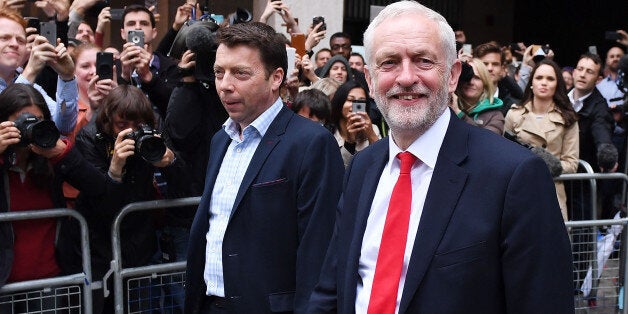
Over the last year have you felt certain that you were in the majority only to find out that you, unfortunately, were among the minority?
I was within the 48% of Britons who desperately wanted to stay in the EU and if I had been able to vote in the US election I would have been in the 47% who passionately wanted Hillary Clinton to be the first female president of the USA.
The night before both the EU Referendum and the US presidential election, I was convinced I was on the winning side. Everyone across all my social media platforms - bar the odd one or two - was expressing the same opinions as me. I must have been in the majority, surely?
No, both times I was in the minority. Both times I woke up to discover that the worst possible outcome - for me and those in my social media circles - had become a reality.
So when Theresa May called the snap election I felt tentatively positive about the outcome because, again, although there was the odd Conservative supporter across my social media platforms, they were drowned out by the sheer number that implored you to use your voice to support 'the many not the few'.
It all began with the Twitter hashtag #BloggersWhoVote - created by Laura Jane Williams - who advised members of the blogging community to use their platforms to encourage their young audience to register to vote. This is, after all, an audience which predominately falls into the group least likely to vote; women aged 18 to 24.
It's worth mentioning here that not once did Theresa May herself, or her party, tweet a link to encourage people to register. In fact they didn't do anything to appeal to young people and even alienated their key voters - as one Tory MP said of their disastrous manifesto, it only missed out "compulsory euthanasia for the over 70s".
Did you know that about 120,000 Leave voters died in the 6 months following the EU Referendum? It goes some way to showing you the age split between the Leave and Remain voters.
Similarly, according to YouGov, for every ten years older a person is, the likelihood of them voting Conservative increases by 8 points and the likelihood of them voting Labour decreases by 6 points.
What Labour needed to do was appeal to young people and where are they? On social media. I think the fact Corbyn has 1.28m Twitter followers to May's moderate 360k, speaks volumes.
Social media evokes the feeling of togetherness which Labour used to its advantage, binding people together with a vision of positivity and unity.
The Tories instead offered a strategy that resembled playground antics as they merely picked apart the opposition. This approach was so adverse that a song was released by Captain Ska called "Liar Liar", which quickly shot up the charts and captured the public mood perfectly.
The young already felt disillusioned by politics and that no politician really spoke for them. So, while the Conservatives put more effort in to smearing Corbyn than promoting their own manifesto, he was chatting to Grime artist JME about why 'the youth' weren't voting
Once registration closed it was over to the Grime artists, and 'Grime4Corbyn' was born. He was also brought out on stage by the Libertines to his name being chanted and appeared on the front cover of Kerrang magazine. Finally, here was a man the youth felt spoke both with and for them.
Influencers - from Zoella to Stormzy - continued using their status and platform to encourage their following to vote. Some didn't state a preference and just urged their audience to use their voice, while others openly argued their case for Corbyn's Labour.
While our right-wing national newspapers were providing a biased account, social media allowed people to explore differing views and voice their opinions.
But, I thought, unfortunately, these opinions will just be of those like-minded people within the social media bubble that I live in.
This time, however, it appears the bubble may have been burst - or, at least Labour had a good go at bursting it. Although the party didn't win, despite the attempts by many national newspapers and opposing parties to belittle Corbyn as a 'terrorist sympathiser' he actually increased his support and massively outperformed expectations. Meanwhile Theresa May, who held the election to increase her majority, actually lost it and is now in talks with the DUP to form a government with a slim majority.
Britons voted in their highest numbers for 25 years, with the turnout of 18-25 year olds expected to be more than 20% higher than in 2015. Labour, meanwhile, received its highest share of the vote for 20 years.
Perhaps after such a close Brexit vote, those who hadn't voted last year or regretted their vote realised their voice really could make a difference. Maybe it was a rejection of a hard Brexit and of Theresa May - who was so confident she would win she often didn't even bother to turn up to argue or debate her manifesto - and probably, in part, it was down to the power of social media.
While the Conservatives spent £1.2 million on anti-Corbyn social media adverts, the man himself was offering the masses what they wanted and needed to hear - hope.
When, in an interview following the election, Andrew Marr asked him if he was in it for the long-run, Corbyn replied: "Look at me, I've got youth on my side."
Regardless of the outcome, I think this election has shown politicians the power of social media and the importance of using it to market themselves during a campaign. It is safe to say that no one will underestimate the importance of these platforms in political campaigns again.
